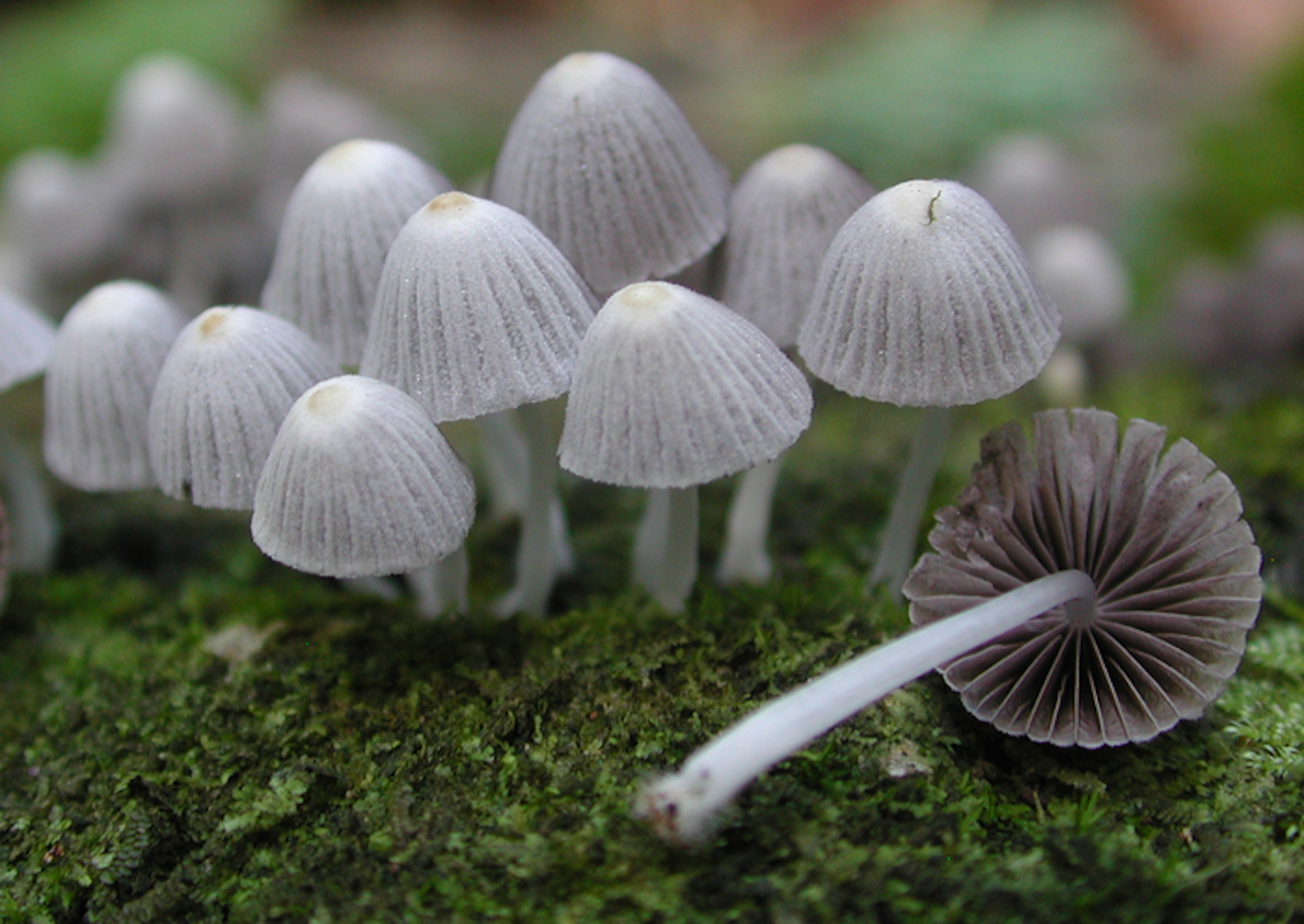

Back in the late aughts, mycologist Matteo Garbelotto gripped a rope as he slung himself on a steep slope covered in lush, humid tropical growth. The terrain was tricky to traverse, but he had his eyes set on a small prize propped on a remote ledge.
“I remember being attached to a rope with my hands sticking out on the precipice, trying to collect a mushroom that was growing on a little outcrop where you couldn’t possibly walk,” Garbelotto said in a press release by University of California, Berkeley, where he is the director of the Forest Pathology and Mycology Lab. This hard-to-reach mushroom was just one of hundreds of fungi Garbelotto and UC Berkeley researchers plucked from plants, trees, and soil across the French Polynesian island of Mo’orea in the South Pacific.
Garbelotto calls Mo’orea a “treasure trove” of fungal biodiversity. The survey “is one the first attempts to generate baseline information on fungal diversity, not just for Mo’orea, but for the entire and vast Insular Oceania region,” he said in the release. The diverse array of fungi fanning across the island came in a variety of vivid colors and unique shapes—from umbrella-shaped fairy inkcap mushrooms to gilled, electric yellow fungi to cone-shaped “bird’s nest fungus.”
In a paper published in the Journal of Biogeography on March 31, UC Berkeley scientists described more than 550 specimens of macrofungi, which are fungi that have visible fruiting bodies. The collection contains 205 morphospecies, or taxonomic species that are distinguished primarily by distinct shape and structural differences. The findings are a part of a larger effort called the Mo’orea Biocode Project, which cataloged the diversity of animals, plants, and other non-microbial organisms in the island’s marine and terrestrial habitats from 2007 to 2010.

Lying within the Society Islands archipelago, Mo’orea is a volcanic island about 2.15 to 1.36 million years old, but is actually a young formation—geologically speaking. The entire archipelago was never connected to a continental landmass, with Polynesians populating the area around 3,000 years ago and even more recently seeing trade and tourism. Mo’orea’s mix of pristine habitats and inhabited regions that have been deeply changed by humans make it a unique place to trace fungal colonization, Garbelotto explains.
“Mo’orea may really hold the key to understanding fungal evolution because of how remote it is and how varied the vegetation is,” Garbelotto wrote to PopSci in an email. “Other islands are either too close to continental landmass or their vegetation is too homogeneous to provide the same clues on fungal evolution in general.”

Since fungi are dispersed by microscopic spores, they likely have specific geographical patterns across a habitat. Their spread is also often linked to hosts, like certain animals or plants, as well as geologic forces, like wind, water currents, or climate. Because the growth of fungi is dependent on their surroundings and other organisms, they are a good proxy for understanding ecological relationships on the island. The distribution patterns have important implications for conservation and biodiversity estimation, the study authors write.
[Related: This fungus has over 23,000 sexes and no qualms about it]
“Fungi are really important parts of ecosystems,” said study first author Todd Osmundson in the press release. He was a former UC Berkeley researcher and is currently a biology professor at the University of Wisconsin-La Crosse. “They act as primary decomposers, and in some cases [as] pathogens that break down decaying organic matter and recycle the nutrients into forms that other organisms can use. They’re also really important as symbionts. They live with other organisms and benefit that organism in exchange for other things. For instance, some fungi will attach to the roots of plants and exchange nutrients with them.”

During their collecting period between 2008 and 2009, the research team would head out at dawn and continue searching through the early afternoon in the humidity and heat. They hunted for fungi throughout the island—one day exploring a small island off the shore in the reef and the next climbing up mountains nearly 3,000 feet tall. They walked under palms and trekked through mangrove forests, and collaborated with native Polynesians to learn about local use of fungi and some of the species grown on private plantations and properties.
“The diversity of habitat in a small area is stunning,” Garbelotto said. “After a while we could tell where we were by just looking at the fungi—each habitat had its very unique cohort of fungi.”
After collecting, the team would photograph and dry the specimens to store back at UC Berkeley’s herbarium. Back in the lab, they would then analyze DNA sequences to measure diversity, look at the level of endemicity, or native specimens, and how the fungi distribution radiated on the island. Comparing the sequences of the fungi from Mo’orea to other species around the world helped the team identify where species had originally come from.

“I was really surprised when we compared DNA sequences from Mo’orea and found out that very few were a perfect match with sequences from fungi anywhere in the world,” Garbelotto told us in the email. “This is telling us our specimens represent, for the most part, undescribed fungi.”
More than 100 of the taxa represented in the collection may be new species, he said. Garbelotto added that the small number of DNA sequences that were similar to known species suggests that they could be dealing with genetically distinct populations or subspecies. While the majority of the fungi seem to have ancestral ties to other nearby South Pacific Islands or Australia, a small number may have originated from further away South America, East Asia, and Europe.
This suggests “that rare, super long-distance hops are possible,” Garbelotto said. “Human migration and human trade have far reaching consequences on biodiversity and may influence evolutionary trajectories.”
